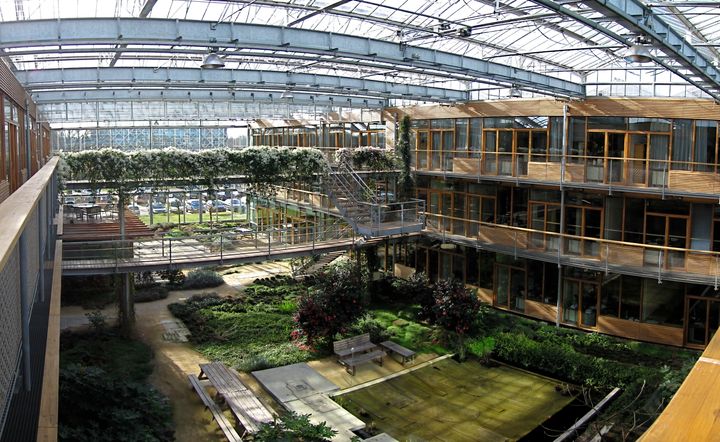
“Feeding the world” used to be a mantra I came across often in the 1970s. This was the time I wrote my first book, “Fear in the Countryside: The Control of Agricultural Resources in the Poor Countries by Non-Peasant Elites.”
My research in Colombia in the summer of 1975 fuelled my passion in defending the agrarian civilization of the peasants. In Colombia I relived my Greek upbringing in a small farm that produced just about everything.
I filled my book with examples of small, self-reliant farms feeding families and countries. I highlighted that the export to the tropics of tractors-based farming was changing societies in favor of local oligarchies. I said all the talk about peasant backwardness and inefficiency was so much smoke and mirrors hiding the grab of peasant land by the local elites and the global companies doing business with them.
There was also a deeper psychological reason for the gospel of the “green revolution,” a fancy slogan for the export to the tropics of heavy-duty tractor and pesticide farming. The United States and Europe had a dark legacy of farm slavery behind them. This slavery used and killed countless Africans in farms in America and the tropics. Slave labor enriched millions of American and European farmers for centuries. This reality, unspoken but in the consciousness of Americans and Europeans, probably had something to do with their empty talk about feeding the world. But feeding the world had a practical effect: the global spreading of mechanical and chemical farming, the green revolution.
The United States and some European countries wanted the world to believe they had figured out how to eliminate hunger. They had ways and means of producing as much or more food the world needed.
So they funded the education of young students from Africa, Asia and Latin America at American and European agricultural universities. In addition, European and American governments and foundations poured money for spreading the industrial model of farming throughout the world.
Some forty years after the appearance of my 1976 book, “Fear in the Countryside,” more than 800 million people ate hungry. In fact, the governments and corporations that promised food abundance are destabilizing the world. Their green revolution has become a revolution of species extinction. Their pesticides are wiping out insects, birds, and amphibians at a furious pace. Billions of farm animals are a major source of emission of global warming gases. And the concentration of land and power in fewer and fewer farmers is unsettling rural America and thousands of villages throughout the world.
No one is feeding the world. However, the mantra of feeding the world continues among UN and government officials, lobbyists, and academics.
Astonishingly, a small European country and former formidable empire, the Netherlands, is making the loudest noise about feeding the world. Working through its Wageningen University and Research, Netherlands is telling the world it has the answer to feeding the world.
Wageningen University sees itself like the Silicon Valley of California. It is the brain of a vast global enterprise around food and food security and the environment. Its food and environment projects span the world: Mexico, Brazil, Argentina, Ghana, Kenya, Ethiopia, Kazakhstan, India, Bangladesh, Indonesia and China.
Thousands of Dutch scientists, engineers and industrialists are supporting a vigorous infrastructure of research and innovation designed to make the Netherlands if not the first but a major player in world food production and the future of food.
For the last three decades, Netherlands has been developing an ultra high-tech agriculture. For example, no country can compete with the Netherlands on tomatoes. The Dutch have been producing so many tomatoes per square mile, they are number one in the world. In 2017, the yield of tomatoes in Holland translated into 144,352 tons per square mile. The Dutch also are number one in the world in the production of chilies, green peppers and cucumbers; second in pears; fifth in carrots; and sixth in potatoes and onions.
Why is the Netherlands so successful in horticulture?
The metaphysics of the Dutch includes the old and the new. The old is their former status of running a colonial empire based on slave farm labor. That system made them internationalists, wealthy and powerful. It’s possible this past imperial tradition is fuelling today’s global march for primacy in food. The new idea in Dutch metaphysics is the dogma of American agribusiness: that given plenty of land, machines, and science, you master the land and the natural world.
The Netherlands does not have much land. So it directs its science and engineering to even surpass American agribusiness. The Dutch produce all these miracles of huge amounts of vegetables under glass. Their gigantic greenhouses have their own climate. It does not matter if outside the greenhouses it is cold or hot, day or night. The ultra high-tech greenhouses provide ideal conditions for vegetable production twenty-four hours a day all year long. Greenhouses in Holland cover thirty-six square miles.
The Dutch are minimizing the environmental impact of their industrialized horticulture. For example, they use 1.1 gallons of water per pound of tomato. In contrast, it takes 15.2 gallons of water per pound of tomato in America and 34.0 in China. The Dutch also have reduced the use of pesticides and stay clear of the genetic engineering of crops.
Yet, the pictures of Dutch greenhouses in the National Geographic of September 2017 shocked me. These greenhouses require technical perfection and faultless management. That alone makes them machines and factories.
This is no agriculture. It’s a science and technology going haywire. No human can dominate nature for long.
So why is Netherlands not using its great talent to assist the world in dramatically reducing its population and improving its traditional small-scale farming? That’s a better solution than trying to keep expanding the yield of crops. Perpetual population growth is suicidal – especially at a time of global warming.
The Dutch greenhouses are temporary convenience that will never feed the world.
